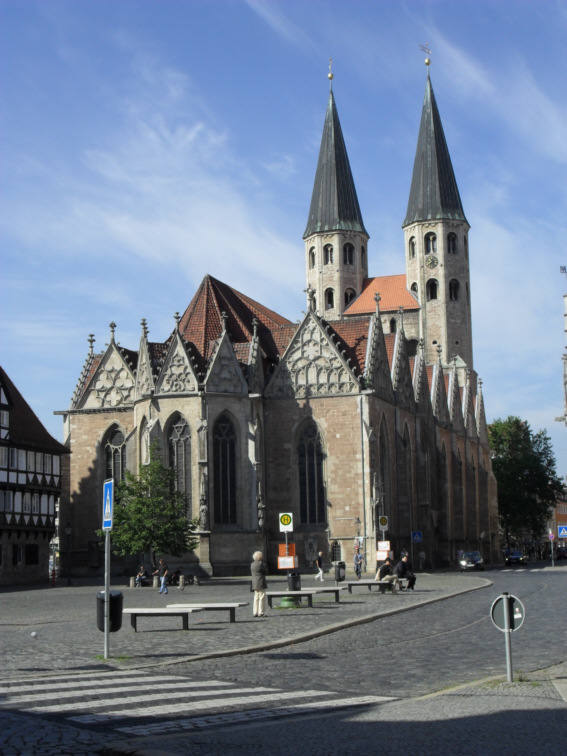 |
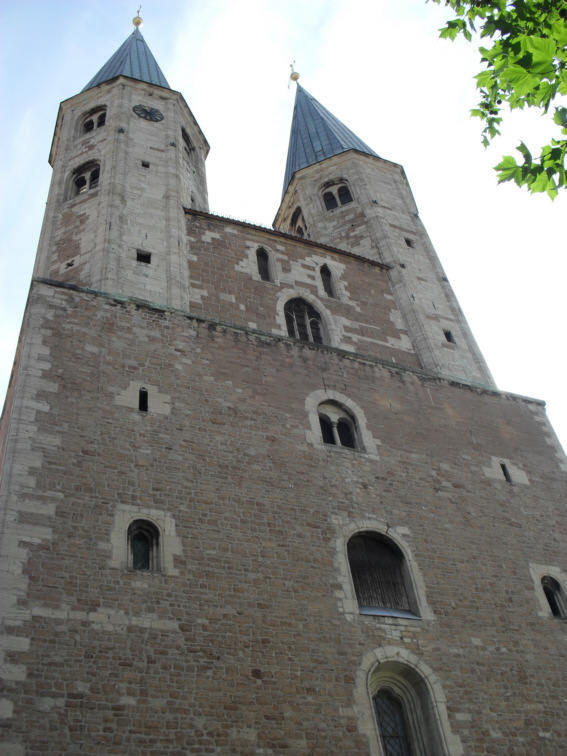 | The St Martini Church was founded around 1190 and was erected at the same time like the Cathedral St Blasii which was the architectural example for St Martini. St Martini was at the beginning a romanesque pillar basilica with two aisles and one nave and a cross-shaped floor plan. Major changes in gothic style were made since the mid-13th century. The Anne Chapel was added to the church in 1434. Further modifications were made during the 17th and 18th century. The church received its present appearance by the last interior renovation of 1989-92. St Martini became protestant in 1528. |
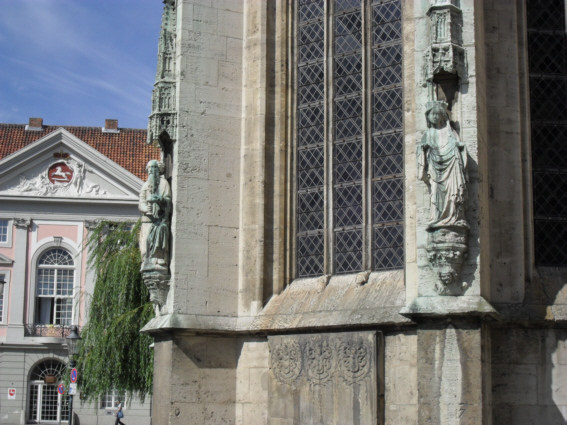 |
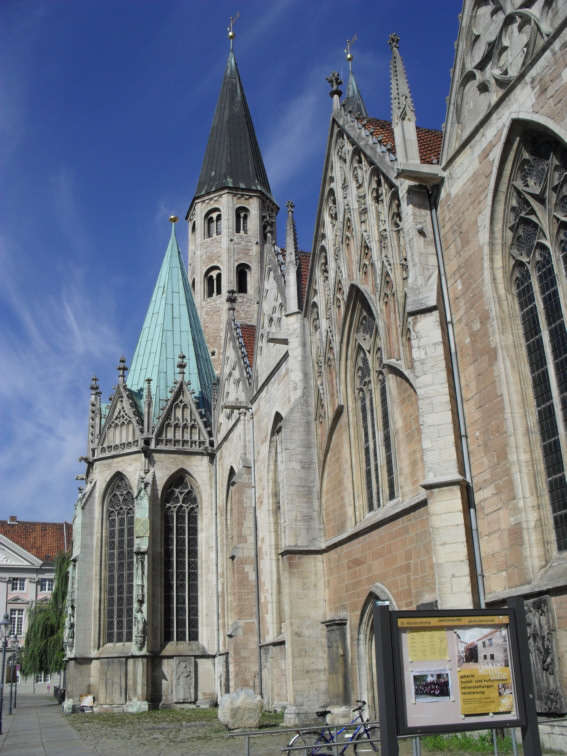 |
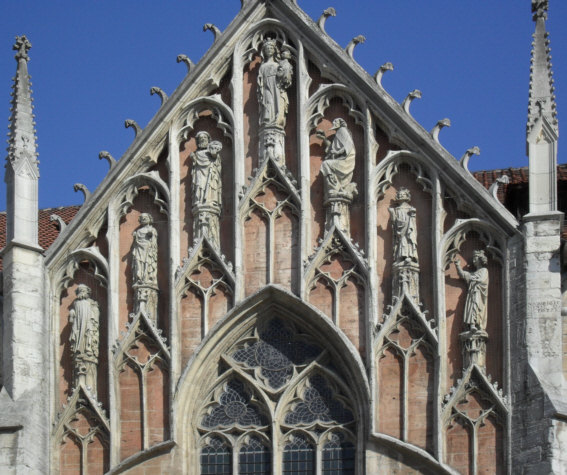 |
Outside the church are numerous architectural sculptures and ornamental figures to see:
On the north side above the portals: an arch relief with a depiction of the lamb of God surrounded by the symbols of the gospels (abt. 1320), one depicting the death of Mary. Sculptures of Christ, Ecclesia and Synagogue, as well as four of the wise and foolish virgins, stand above in the gable.
Distributed around the choir are four sculptures: A bishop (Martin?), Mary with child, St Bernward of Hildesheim (early 15th century) and Martin Luther (1700).
On the south side is another gable with seven ornamental figures (Right picture above): Mary, the three Magi, John the Baptist, Peter and Paul (abt. 1330).
On the exterior walls of St Anne's Chapelthe figures of Mary and the Magi can be found (Left picture above).
The two equally high steeples of St Martini Church were destroyed in the war, but were rebuilt in 1980. The belfry contains nine bells, the last of which was consecrated in 1987. |
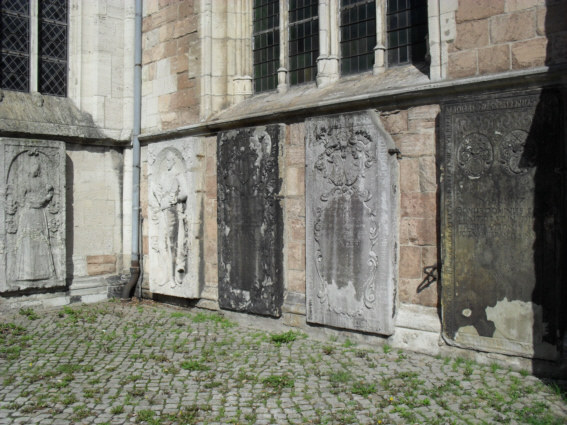 |
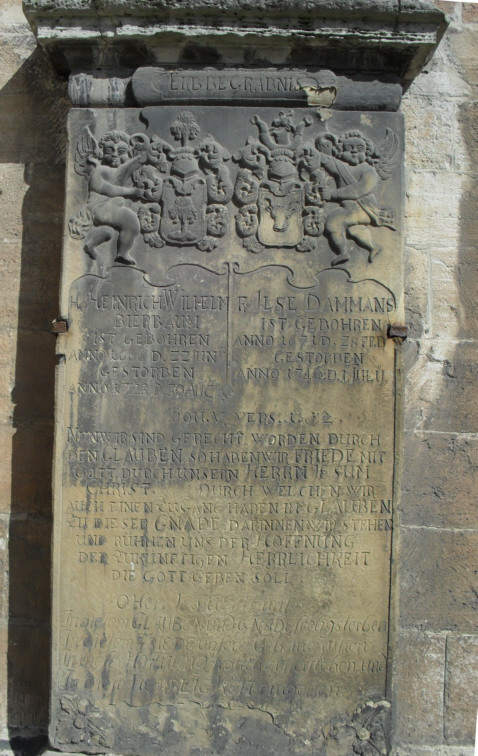 |
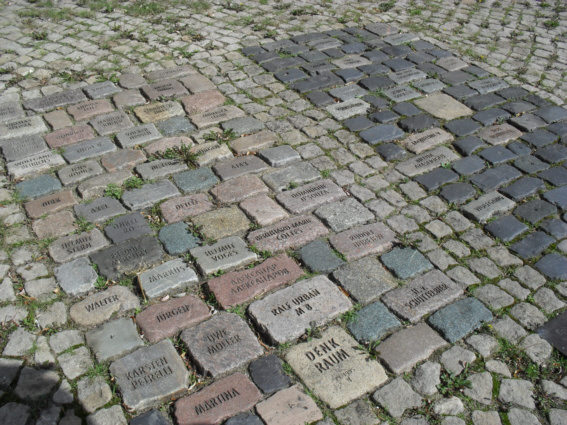 |
A large number of grave panels are mounted on the exterior walls of St Martini. Unforunately did the pollution a "good" job and most panels are severely damaged. The church is located in downtown and thousands of cars are passing it each day. |
Heinrich Wilhelm Bierbaum
∗ 22 June 1666
† 30 August 1729
Ilse Dammans
∗ 08 February 1671
† 01 July 1746 |
Two small fields of "Stolpersteine" (Stumbling stones) at the south side of the church remember the deads of AIDS. Local persons but also well-known persons like Freddy Mercury are mentioned here. |
The Interior of St Martini
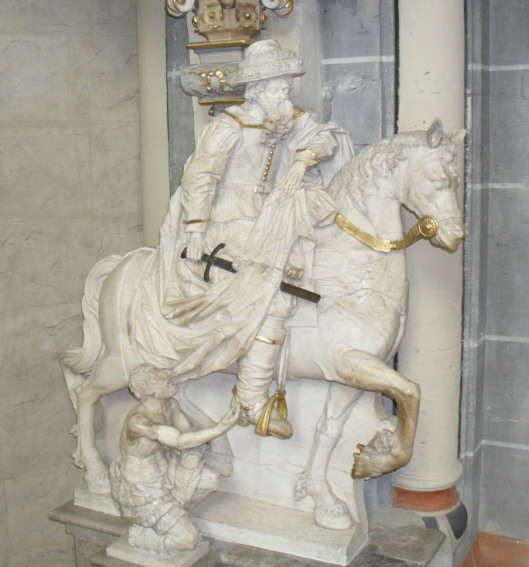 |
St Martin is the patron saint of the church. |
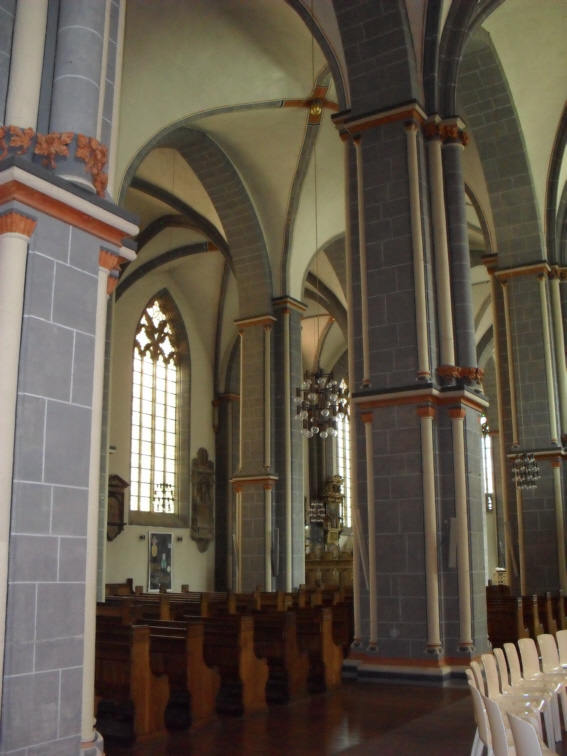 |
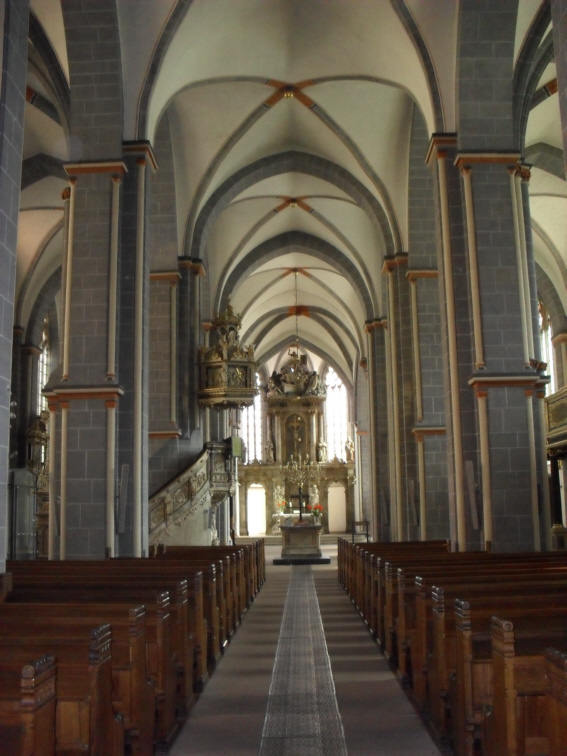 |
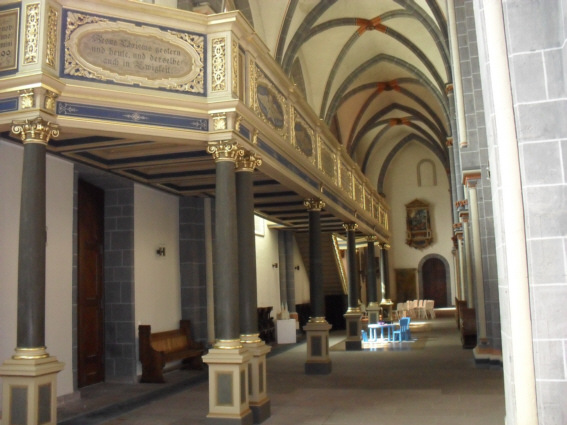 |
A diagonal view through the church. |
The view from the entrance to the high altar. |
The north aisle with the splendid decorated gallery. |
The Pulpit
The pulpit was built between 1617 and 1621 and was a work of Mr. J. Röttger. The foot represents St Martin as he shared his coat with a beggar. St Martin was designed as a contemporary warrior. The pulpit itself displays scenes of the life of Jesus Christ: Annunciation, visitation, birth and curtailment. The four evangelists are added to the reliefs. The banisters supplements these reliefs by depiction of the adoration of the kings, the presentation in the temple and the escape from Egypt. The front part of the stairs (gate) represents Christ and the clever and foolish virgins. The top of the pulpit contains reliefs about the mockery, carrying of the cross, crucifixion, burial and resurrection of Jesus Christ.
| 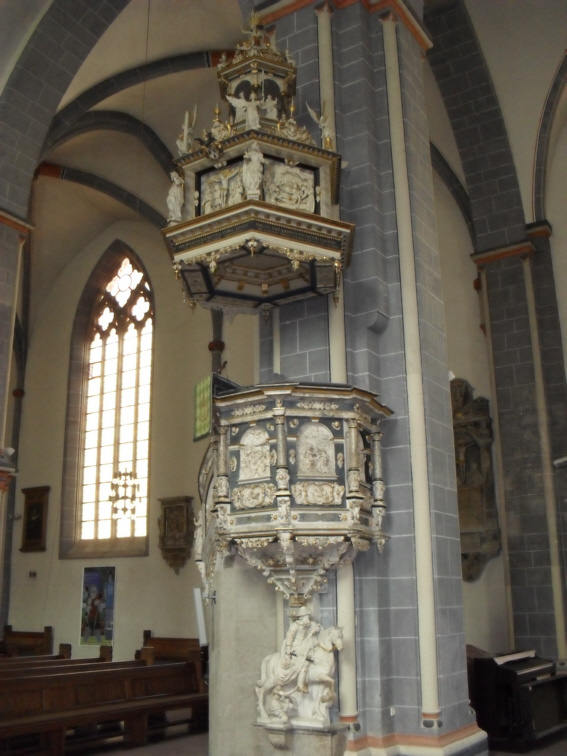 |
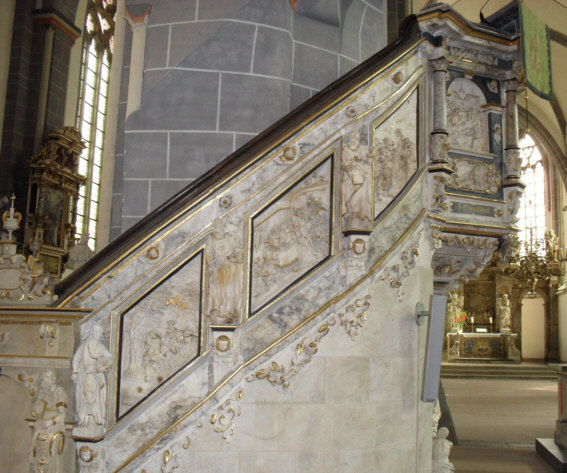 |
The High Altar
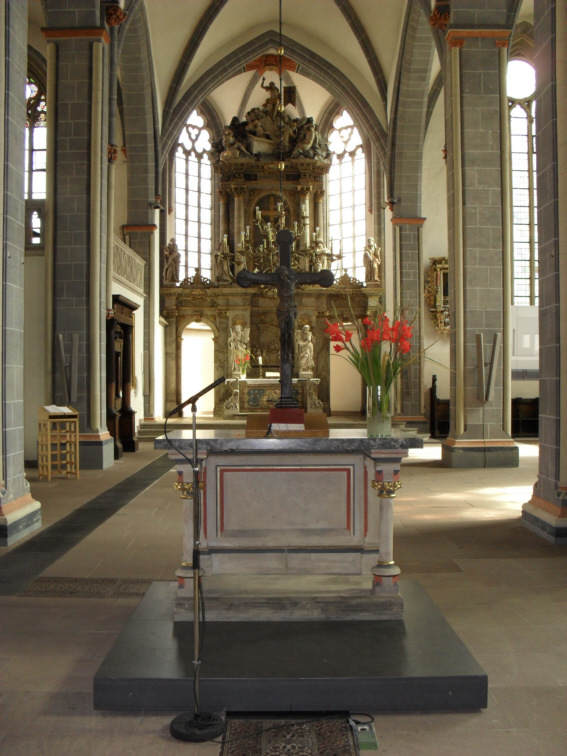 |
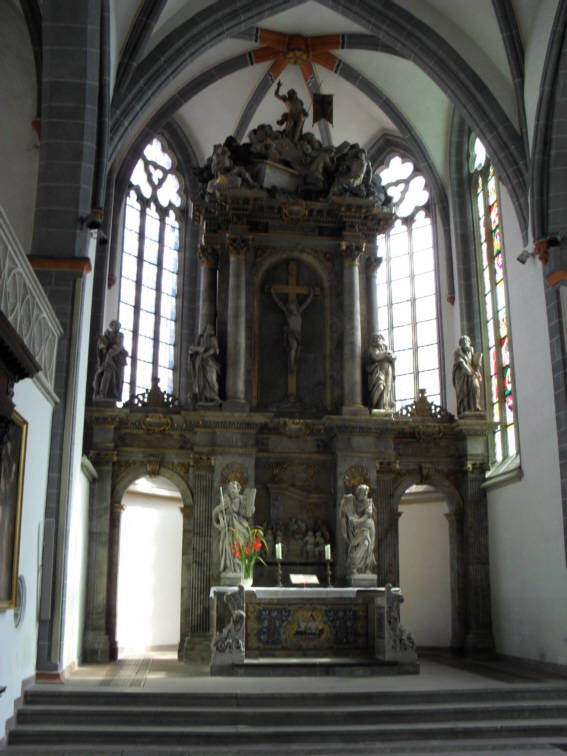 |
The high altar is a sculptor work of the high baroque and created by A. D. Jenner between 1722 and 1725. It is designed as communion altar.
The altar table was decorated with the mosaic of the lamb, the book with the seven seals as well as with wheat and vine as symbol for the holy communion. Above is to see a relief of the communion framed by the prophets Jesaja and Moses. In the middle is Jesus Christ at the cross displayed. On the left and right side of him the evangelists Matthew, Markus, and Luke as well as the apostle Paul. The top shows the resurrection of Jesus Christ. |
The Anne Chapel
The Anne chapel was donated by Wasmod von Kemme in 1434. The first what can be noticed are the six large statues from 1440 in window height: Maria, the holy three kings, Joachim and Anna selbdritt*. Above the ogees are apostle and holy figure to seen. In the centre is the coronation of Mary displayed.
The font with canopy and fence was placed under the organ before they were moved to the Anne chapel in 1899. The font was casted in bronze by B. Sprangken in 1441. Seven biblical scenes from the beginning and end of the life of Jesus Christ are depicted on the basin.
The wooden canopy was added and created by J. Röttger in 1618. The three-storey construction shows Old Testament stories, the baptism of Jesus Christ, the evangelists, the Christian virtues, and the Crucified.
The wrought-iron fence around the baptismal font was erected in 1675. |
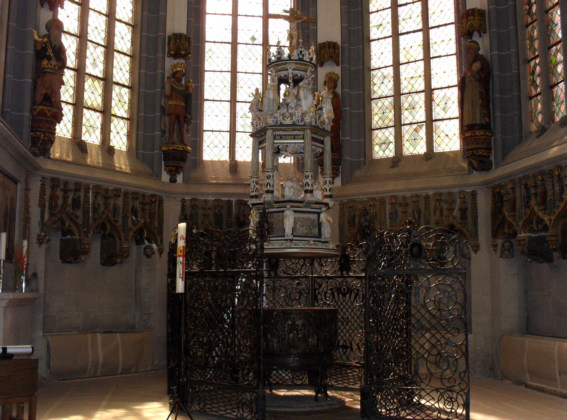 |
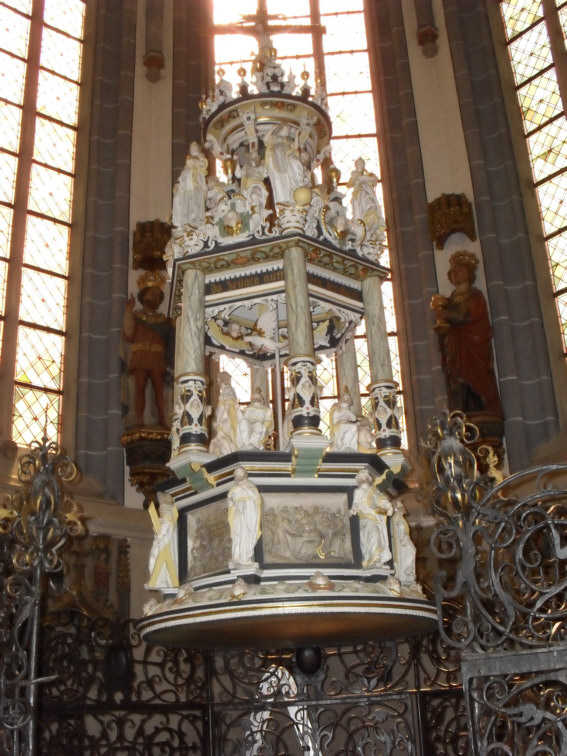 |
*Anna selbdritt, The Virgin and Child with St. Anne - is a subject in Christian art, showing Saint Anne with her daughter, the Virgin Mary, and her grandson Jesus. This type has been quite popular in Germany from the 14th century. |
The organ
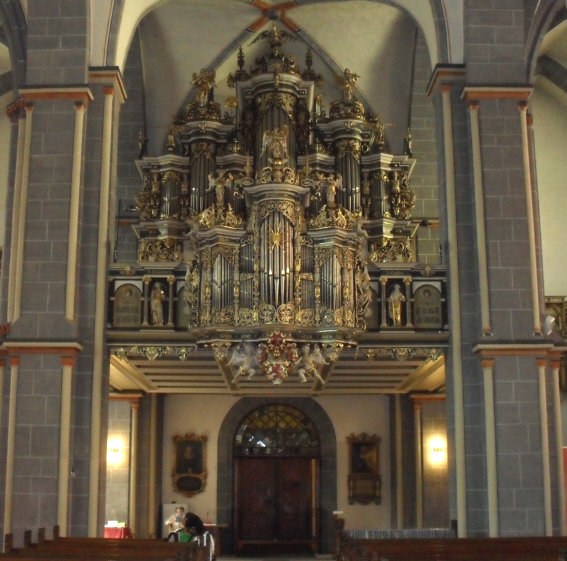 |
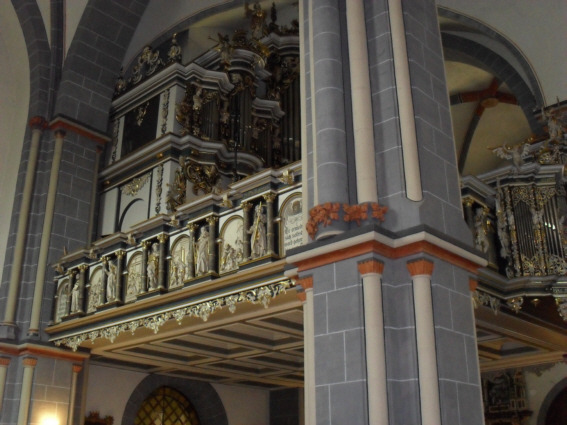 |
The organ was designed and built with two general views. In 1897 the back side was turned to the front. Further changes were made to the 45-register organ in the years 1957 - 1973.
The reliefs are also are also created by J. Röttger between 1617 and 1621. They were used as form elements in the organ balustrade in 1630, after they had been orginally planned for the gallery. Seperated by figures of apostles, scenes from the passion of Jesus are depicted: The taking of Jesus as prisoner, Jesus in front of Herod, the coronation of Jesus with the thorn crown, Pilate washing his hands in innocent, Jesus in front of Pilate, the bearing of the cross and the crucifixion. |
The epitaph of the Walbeck family
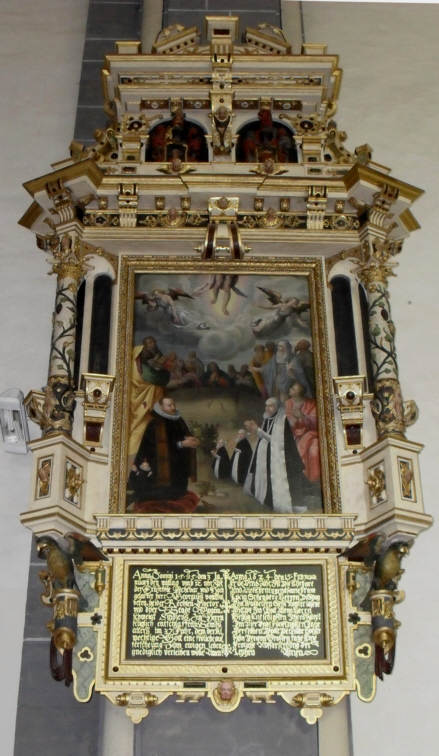 |
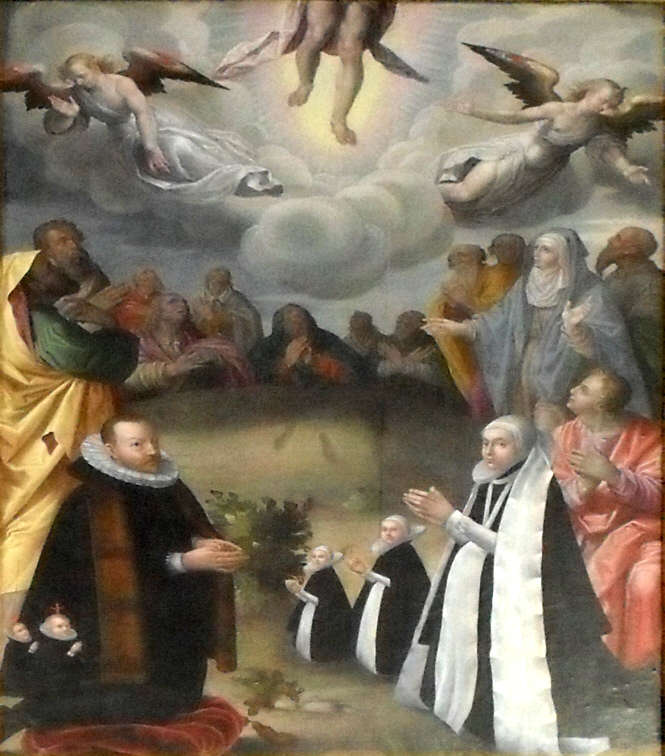 |
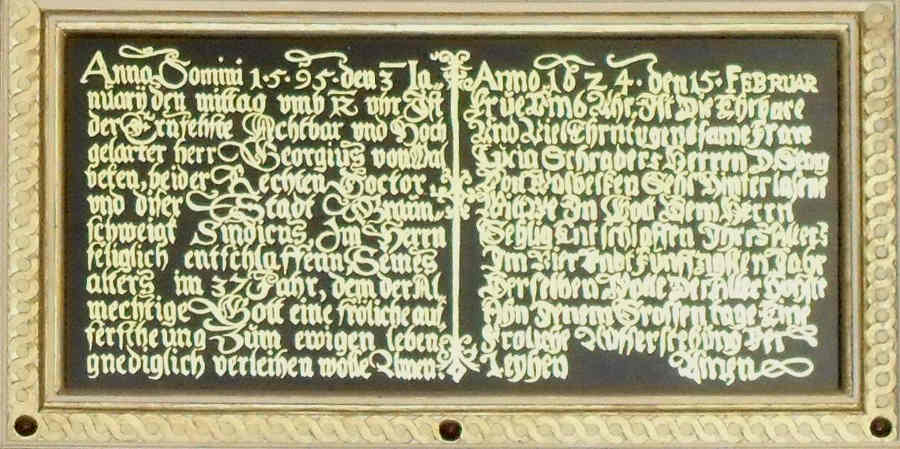 |
The church contains some epitaphs. The epitaph of the Walbeck family is one of them. The painting displays Georg von Walbeck and his wife Lucia Schraders. The inscription is diffcult to read and very difficult to translate, an old German is used, but here are the data:
Georgius von Walbeck
died 3 January 1595
aged 37 years
Lucia Schraders
died 15 february 1624
aged 54 years
|
More detailed pictures can be seen on "St. Martini church - 320 photos"
|





